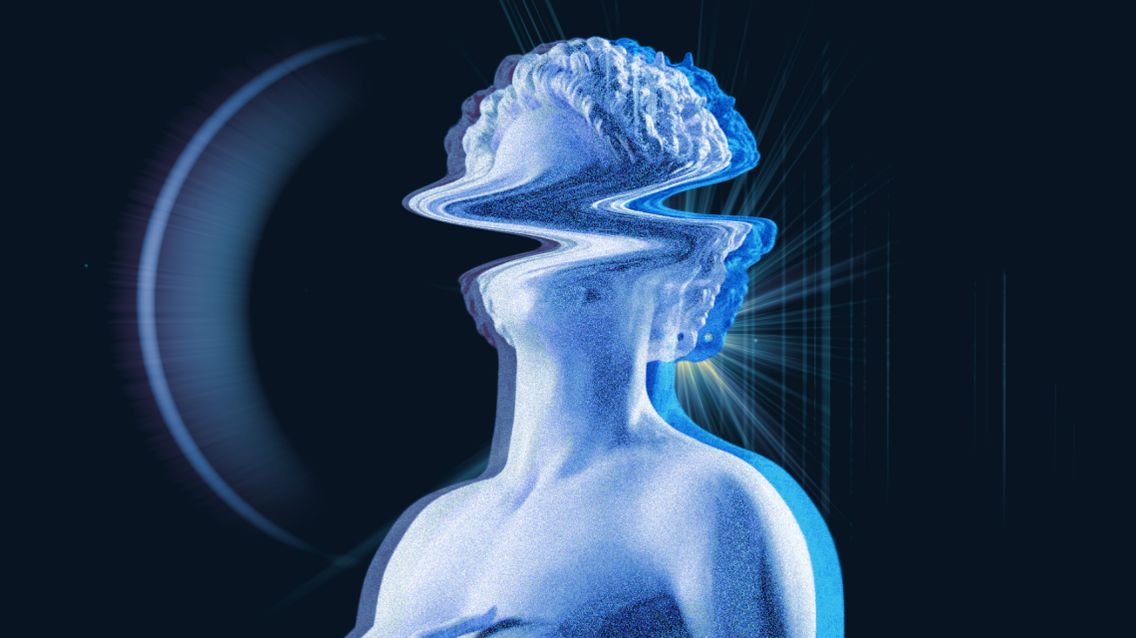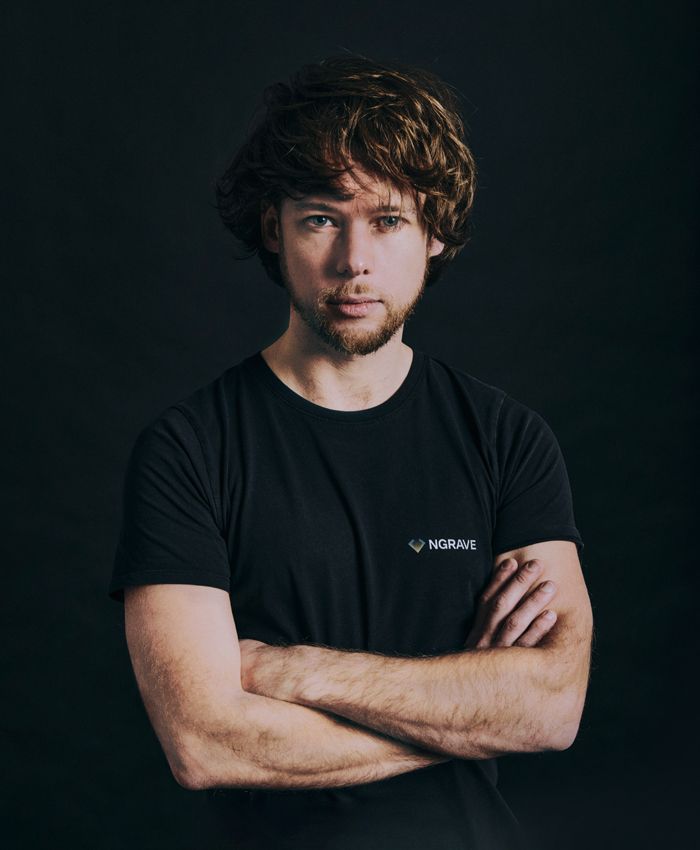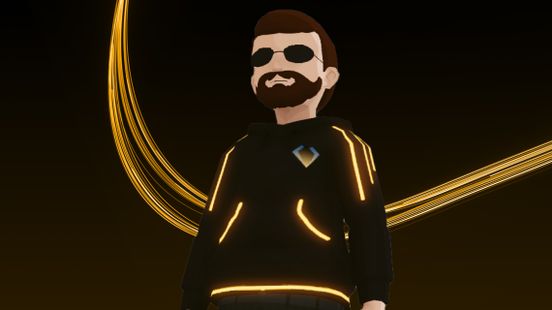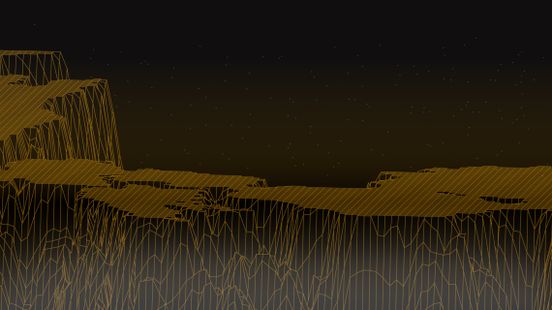

How NFTs Are Changing Everyday Life
The short answer is - more than you might realise.
- Article Quick Links:
- What is an NFT?
- What are the different types of NFT?
- NFT Art
- NFT Collectables
- Utility NFTs - Tickets, Receipts & Domains
- NFT Tickets
- NFT Receipts
- NFT Domains
- NFT Music
- NFT Gaming
- Property NFTs
- Sports Moments
A lot is being written about how NFTs will revolutionise our lives, from how we manage our identity to how we buy a house, but there is no certainty that wider adoption will come. So the better question to ask is how NFTs are already being used in everyday life. The short answer is - more than you might realise.
What is an NFT?
The term NFT is shorthand for a non-fungible token which doesn’t do a great job of explaining what it is or does. So let’s start by unpacking what fungibility is. If something is fungible it is interchangeable with another item that has identical properties.
Money is a good example of a fungible item. Each dollar may have a unique serial number but their properties are otherwise the same, so you can comfortably exchange one-dollar bill with another, knowing they have the same utility and value. Fungible money is essential for frictionless commerce.

A non-fungible token possesses the opposite quality as it is a digital representation of something with unique properties that isn’t interchangeable like-for-like because it is a one-off.
The underlying concept isn’t new. If you buy a piece of art, sports memorabilia or collectable action figure you’d demand a certificate of authenticity proving that what you’ve bought is genuine and unique, as that is where it derives value.
NFTs provide a record of ownership but without the need to trust whoever issues that certificate of authenticity to prove your boxed ‘Hans Solo’ figure is genuine. Instead, NFTs rely on the power of blockchains to record information and make it almost impossible to alter or counterfeit.
So NFTs are a type of cryptographic token that represents digital proof of ownership of unique assets - digital and physical. Note, that the actual file isn’t stored on the blockchain but its record points to the location.
What makes NFTs more interesting than just acting as a new form of digital receipt is that there is a set of programmable standards, called ERC-721, that underlies them.
The ERC-721 framework makes NFTs adaptable to a whole range of use cases where it is really useful to be able to define a set of attributes that make something unique.
What are the different types of NFT?
Though to newcomers the NFT market might seem to be predominantly associated with variants on a cartoon Ape theme, because of the programmable attributes, there is a growing number of very different NFT use cases. We describe each broad category with real-life examples.
NFT Art

NFTs can act as a record of ownership for digital and physical art, as well as directly generating unique pieces of art via Smart Contracts.
The question of what qualifies as Art will never be settled, it simply comes down to a matter of perception, and in 2021 there were 212,579 individual owners of a piece of art represented by NFT and over 3,500 creators. This generated sales of $2.8billion dollars.
This means that the creation and exchange of NFTs as Art is happening at scale right now whether you think they should be recognised as such or consider them just meaningless JPEGs.
The fact that two of the most established names in the Art world - the auction houses of Sotheby’s and Christie's established in 1744 and 1766 respectively - held combined NFTs auctions NFTs of $250million lends weight to their recognition.
Displaying your family photos on a Smart Digital Frame is commonplace and is being extended to NFTs as with other devices such as Smart TVs so that NFTs are becoming a part of how we enjoy art, just like posters and paintings.
Though NFT art reflects existing habits and interests the blockchain technology it is based on is also creating entirely new genres such as algorithmic art. According to nonfungible.com Art Blocks, a project that hosts NFT art created by combining artistic input and random algorithmic inputs, generated over $1bn in sales in 2021 making it the most popular NFT Art collection.
NFT Collectables

Limited edition collections of themed digital characters with variable attributes. Like crypto versions of Pokemon cards.
In his seminal essay ‘Shelling Out - the Origins of Money’ Nick Szabo talks about shell necklaces dating back 75,000 found in caves in South Africa as the earliest example of collectables.
‘The primary and ultimate evolutionary function of collectables was as a medium for storing and transferring wealth.’
NFTs collectables are the newest expression of that desire to store and transfer wealth, how effective they will prove depends on a huge range of factors from scarcity to cultural significance, but they shouldn’t be regarded as a new fad, but rather an extension of a long tradition.
Whether it is baseball cards, panini stickers or pokemon, we love collectables and though the NFT genre retains a similar structure - with real or imaginary characters grouped by category and ranked by attributes - they are being used in everyday life for social signalling rather than wider utility, such as a game.
The most common flex is to use a collectable NFT as a Twitter profile picture, especially from the two most valuable collections - Crypto Punks and BAYC (Bored Ape Yacht Club). Celebrities from Jay-Z to Eminem have bought punks, while high-profile sports personalities have been quick to jump in such as Stephen Curry and Kyrie Irvine.
PFPs - the common abbreviation - represent a mixture of ostentatious wealth and an exclusive membership badge, a way to be simultaneously unique but part of a wider movement.
Utility NFTs - Tickets, Receipts & Domains
There is no universal agreed categorisation of NFTs with some use cases straddling various industries and types of applications. The Utility category broadly relates to NFTs that provide a tangible use.
NFT Tickets

NFTs can act as a concert/event ticket providing unique features such as VIP access or bonus songs, or as a redeemable proof of purchase.
E-tickets presented on a Smart Phone have become the norm for everything from flight check-in to entering a sporting event or concert. The online ticketing industry is estimated to be worth $30bn but has plenty of drawbacks for consumers:
- Ticket counterfeiting & scams
- Ticket touts & bots
- Insane admin fees
Using NFTs as tickets can address these common customer gripes. The immutable, and transparent nature of blockchains can address the issue of counterfeiting, while the programmable nature of Smart Contracts can make NFT tickets non-transferrable as well as setting price parameters.
The transparency of NFT minting fees will remove the flimsy argument that ticket agents make to justify insane ‘admin’ fees or additional charges for posting them to your home address.
In addition to fixing some of the common problems with existing centralised ticketing systems NFT tickets open a whole range of new opportunities:
- New revenue streams for organisers with NFTs acting as discount codes for merchandise and future events.
- Revenue share can be coded into Smart Contracts making affiliate networks easier to maintain
- By building unique art into NFT tickets they can tell a story and become collectables
- Act as a gateway to fan communities
“The actual use case for NFT tickets will reduce the distribution costs for airlines by anything between 50-75%.” Juan Pablo Lafosse, TravelX. You can learn more about NFT airline tickets here.
As well NFTs acting as tickets to existing events new communities are growing out of the NFT space aligned around specific ideals. A good example of this is VeeFriends created by Gary Vaynerchuk as a way to create intellectual property around a like-minded community. Owning a VeeFriends NFT gives you admission to a yearly lifestyle conference called VeeCon.
NFT Receipts
NFT are the equivalent of digital receipts, except that you don’t have to defer to the rules of a centralised issuer; the blockchain will prove authenticity. So as more retailers accept cryptocurrency NFT-based receipts will become the norm.
NFTs are already being used as a way to redeem purchases made in the Metaverse, such as at NGRAVE’s store in Decentraland where your Avatar can purchase the coldest hardware wallet as they explore the Metajuku virtual shopping district.
NFT Domains
There is so much hype around Web3.0 with crypto wallets acting as the fulcrum allowing you to trustlessly interact with games and services. NFT based personalised wallet addresses and domains, bring a whole new level of utility.
In simple terms NFT domains allow you to register a memorable url that can act as a proxy for your identity, website address and wallet transactions. Their popularity is reminiscent of the scramble to register domain names in the early years of the dot.com boom with over 3 million domains registered across the two most popular providers ENS and Unstoppable Domains.
NFT Music

Artists are now selling their songs and albums as NFTs, which also unlock additional rewards.
The music industry is unrecognisable from ten years ago. Streaming platforms like Spotify have changed the way we buy and enjoy music and that evolution is set to continue with music sold as an NFT.
The ownership model of the music industry, whether physical or digital, was ripe for change but though Spotify is popular with consumers it doesn’t solve problems for artists who struggle to control and benefit from their music. Some estimates suggest that an artist needs almost half a million streams just to make the equivalent of minimum wage.
By issuing their music themselves as NFTs artists can cut out the middleman and unlock entirely new ways of generating long-term revenue while consumers can also benefit from sharing in the artist’s success:
- Music NFTs can program a share of every sale to go to the artist
- Fans can invest directly in their favourite artists by owning music NFTs that become collectables or buying a share of NFT master recordings and earning future revenue
- Music NFTs can give fans additional perks like VIP access, access to remixes or live tracks
Royal is an example of a platform enabling this new ownership and revenue model allowing fans to invest in artists and earn royalties alongside them. They’ve raised $55million in funding with artist investors including The Chainsmokers, Nas, Logic, Stefflon Don, Kygo, Joyner Lucas & Disclosure.
In March 2021 Kings of Leon became the first band to release an album as an NFT. There were three types of tokens associated with ‘When you see yourself”
- A digital version of the album with a dynamic album cover along with a vinyl copy ($50)
- Frontrow seats for life at their concerts ($90k)
- Rare audio-visual art representing the recording process ($150k)
NFT Gaming

The programmable attributes of NFTs make them ideal for defining gaming characters and items, as well as allowing them to be traded outside the game, building value for the player, not the platform.
Though the value of sales of NFTs in 2022 is being driven by Art and Collectables, the volume of sales is dominated by Gaming platforms like Axie Infinity and Illuvium and the sector boasts the most active community with over 1 million active wallets according to nonfungible.com.
NFT is changing the nature of gaming because of the way decentralised blockchains give more power to users to own and monetise their activity. Play-to-Earn and Move-to-Earn models not only allow users to generate financial value in relation to their activity, because of the flexibility of Smart Contracts, NFT owners can rent them out in a profit share arrangement.
This has created enormous communities of rentable gamers in the Philippines, Indonesia, and Venezuela who cannot afford the minimum NFT requirements to play in their own right, but can earn as much playing blockchain-based on behalf of others as they might in traditional roles.
There are some dark undertones to this arrangement which has been description as a new type of digital serfdom. Axie Infinity euphamistically calls it a Scholarship Program with managers giving scholars access to their NFTs.
There is a competitive market for scholarships depending on the revenue split, but given that efforts are rewarded in the underlying game tokens the attainable real world income is subject to changes to the game rules (Axie have been forced to change theirs), the wider crypto-economy (which saw a massive sell-off in May 2022) and hacks such as the $625million exploit in March 2022 of the Ronin Network that supports Axie Infinity.
Sky Mavis, the makers of Axie Infinity, reported that 40% of its users were from the Philippines with current data showing over 2million active monthly users. The problem is that too few of those users are buying and nurturing NFTs, as intended, leading to suggestions that NFT Gaming is vulnerable to collapse.
Property NFTs

NFTs offer the potential to disrupt the traditional property market and make fractional ownership easier.
Just as the music and ticketing industries are ripe for disruption so is the property industry with dense layers of intermediaries all adding to the cost of buying a house.
NFTs offer a natural solution to automating the exchange of funds and property titles, with the underlying blockchain providing immutable proof. The first NFT property sale happened in mid-2021 with TechCrunch founder, Michael Arrington, selling his Kyiv apartment for 36 ETH.
The platform that brokered the sale, Propy, also sold a property in Florida in February 2022, this time for 210 ETH and has boasted of significant demand from both buyers and sellers.
Though the overall process of buying a house as an NFT is more complicated than it might appear there is significant innovation in the area with several property exchanges being funded. There are a number of ancillary services that could develop such as using the NFTs that represent property ownership as collateral for borrowing or lending in DEFI.
Sports Moments
Owning the rights to a memorable sporting moment as a highlight video.
The Sports Moments segment is sometimes included under Collectables or Gaming given that it includes aspects of both, but it has evolved into a category in its own right. Sports Moments are officially sanctioned video snapshots from major sports created, sold and traded as NFTs.
The genre began with NBA Top Shot and has spread to a number of other sports and leagues. NBA Top Shot is created by Dapper Labs allowing users to purchase officially licensed player-focused game highlights called Moments, as NFT.
The huge explosion of interest in NBA Top Shot was the product of the passion of NBA fans and NFT FOMO, but was also helped by the strategic decision to offer traditional payment on-ramp (bank cards) bringing crypto newbies into the NFT scene.
Moments are tradable in a marketplace with value deriving from scarcity and player evolution. Each Moment includes the following:
- a Highlight video
- Highlight/Player Stats
- Moment Type e.g Dunk, Jump Shot
- The collection Series it belongs to
- A Serial Number
- Tier denoting rarity: Common, Fandom, Rare, Legendary, and Ultimate
- Badges - player categorisations related to their experience and achievements e.g Rookie, MVP or Championship winner
The NBA were ahead of the curve but the MLB and NFL have quickly caught up launching similar marketplaces - Candy and NFL All Day respectively - underlining that NFTs are moving sports fandom into Web3.0.
What is so interesting about this process is that NFTs overlaps with so many of the ways that sports fans express their loyalty and interest.
Sorare sells collectable soccer player NFTs - a digital version of the classic Panini stickers - but incorporates that into a fantasy game model, another sector that has become a massive part of sports engagement. They have relationships with over 240 top soccer teams and is about to launch an MLB collection.
On May 1st (2022) Serie A, Italy’s top flight soccer league, gave 10,000 selected fans the chance to watch a live stream of AC Milan vs Fiorentina in the Metaverse. Also in May EA Sports announced their 30-year relationship with FIFA was ending with the launch of EA Sports FC in 2023.
Given how Roblox has made such a success from live Metaverse experiences it seems that this must surely be part of the future gaming models for publishers like EA Sports but with NFTs bringing overlapping areas of engagement together - collectables, fantasy leagues, live streams and moments - while fan tokens provide another potential dimension to engagement.
Though this might all sound very exciting the speculative aspects of NFTs mixed with fan loyalty and the thin line between fantasy games and gambling means that the Sports NFT sector should be treated with caution.
There is plenty of evidence that NFTs are being used in everyday life and even beginning to disrupt longstanding patterns of behaviour, especially among Gen-Z in terms of social status, community engagement and sports fandom.
That doesn’t mean that every NFT application will be successful, the early experiments in Music, Ticketing and Property may not take root, while the insane growth in the trading of NFT collectables, art and gaming have shown clear signs of cooling off.
It is too soon to know for sure where the disruption NFTs is bringing in the short term will become permanent but all the signs suggest we should accept that sooner or later NFTs are going to become as important to our lives.
Article Quick Links:
- What is an NFT?
- What are the different types of NFT?
- NFT Art
- NFT Collectables
- Utility NFTs - Tickets, Receipts & Domains
- NFT Tickets
- NFT Receipts
- NFT Domains
- NFT Music
- NFT Gaming
- Property NFTs
- Sports Moments

Ruben is a repeat tech entrepreneur. His focus is on digital asset security and financial empowerment. He is co-founder and CEO of NGRAVE, the creator of “ZERO” - the world’s most secure hardware wallet for crypto storage. In 2021, he was selected for Belgium’s 40 under 40. Before that, he was a finalist in scale-ups.eu’s Disruptive Innovator of the Year 2020 Award, and nominated in Google/PWC/Trends’ Digital Pioneer 2020.

